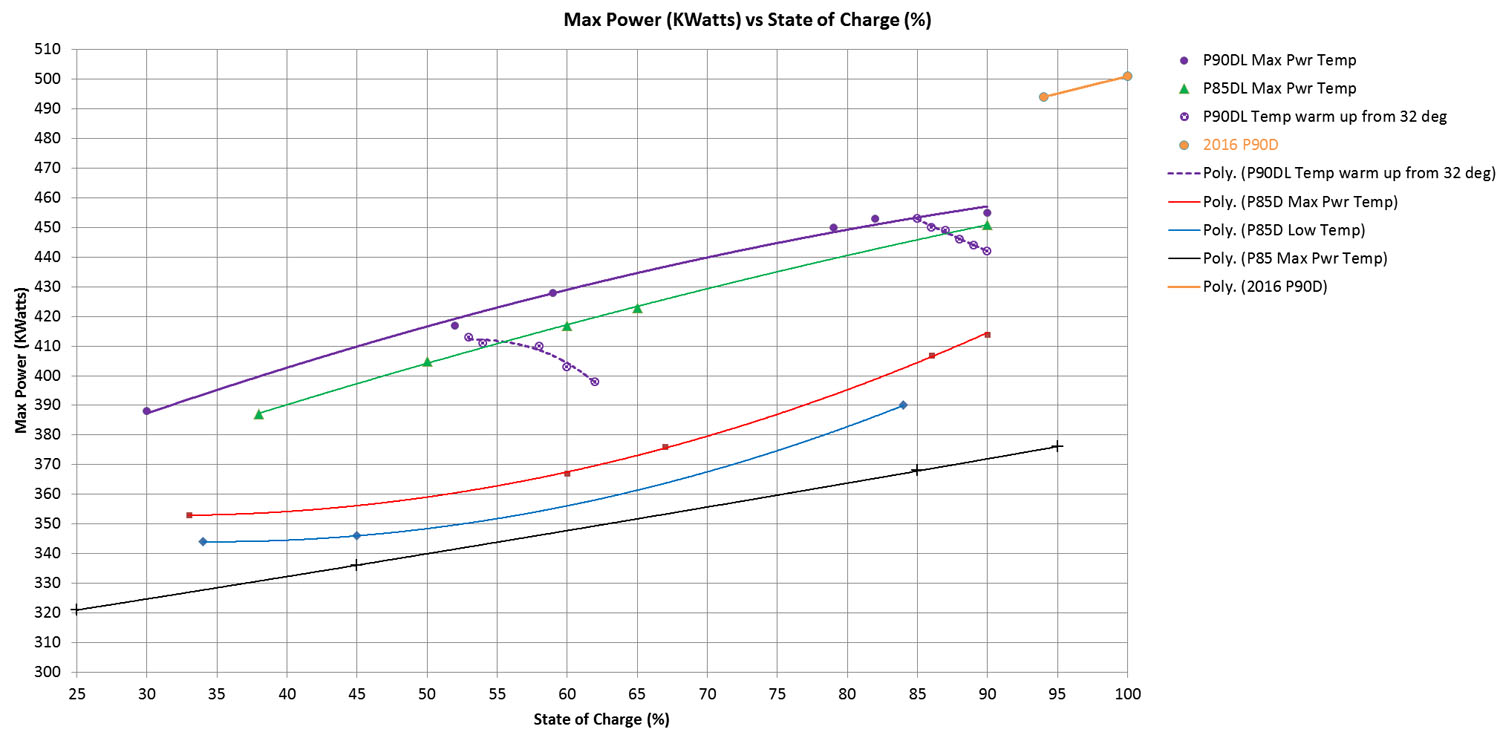Seems highly likely.
That would be shitty news for all the current P90DL owners who bought a 10.9 second car.
You can install our site as a web app on your iOS device by utilizing the Add to Home Screen feature in Safari. Please see this thread for more details on this.
Note: This feature may not be available in some browsers.
Seems highly likely.
No, the EPA rating occurred long before the refresh. The only thing I can think of is a change in hardware (e.g. battery, BMS).
Don't you think Tesla can test the car and update the EPA specs prior to rolling it out to the public? These things have a lead time and require documentation. I wouldn't be surprised to see them out of synch.
EPA updates have happened long AFTER a change in the past. Take rated range on 90 packs, for example.
Your arguments don't make sense. Why are you ruling out that Tesla or a supplier could have made an improvement on the pack, BMS or some other hardware component? The "what is your 90%..." type posts from owners of new 90's (pre-refresh) starting this past January were saying that they were getting these unbelievably high numbers. People didn't believe them at first and asked for screenshots. In addtion Tesla updated their EPA numbers on their order page weeks before the refresh announcement. It's not the aerodynamics that did this.So?
EPA updates tend to be once a year. If cars are changed several times per year or even daily any significant change could be BEFORE or AFTER the EPA submission date.
I'm saying Tesla has a group that designs and tests cars and another group that deals with regulations. The regulation group probably just makes as few submissions as they can per year or possibly are limited by the EPA being only willing to accept so many submissions per year.
Consider most car manufacturers use Model Years and the EPA is probably geared to accept and store yearly submissions.


When that log was taken, I was running 2.20.30.
Tonight I did it again, this time 2.24.30 and had a peak power output of 501kw doing a 0-60 launch.
Lets talk batteries some more....
I've asked this on another thread- but you guys seem to be much more save about Ludicrous operations and discharge cycle.
1) known degradation if one overcharges (100%) and does not discharge soon. Does degradation happen if one discharges rapidly, repeatedly ?
[as in hot rodding in ludicrous mode] i.e. - should one be cautious about buying a used ludicrous car?
2) The 2016 S60 seems to be a 75 kWh pack. Seems like it is software limited to recharging to 80% of 75, or 60 kWh. But does this mean it cannot discharge 75 kWh? Is there any performance difference gained by buying the 75 kWh upgrade?
Lets talk batteries some more....
I've asked this on another thread- but you guys seem to be much more save about Ludicrous operations and discharge cycle.
1) known degradation if one overcharges (100%) and does not discharge soon. Does degradation happen if one discharges rapidly, repeatedly ?
[as in hot rodding in ludicrous mode] i.e. - should one be cautious about buying a used ludicrous car?
2) The MS60 seems to be a 75 kWh pack. Seems like it is software limited to recharging to 80% of 75, or 60 kWh. But does this mean it cannot discharge 75 kWh? Is there any performance difference gained by buying the 75 kWh upgrade?
Performance in a Tesla peaks at 90% SOC . . . Charging the 75 pack to 100% will give you more range but less performance than charging it to 90%.
Shotgun - could you do a run with 90% SOC and MaxBattPwr OFF? That would tell us a lot about what is going on.
Thanks!
What is the evidence for this claim?
Tesla limits pack output above a certain temperature/SOC combination. It isn't just temperature or just SOC and I don't know the formula to make a table or plot it

See the charts in this very thread.
And those charts are labled with 2, count them 2 axis. One is SOC% and the other is KW. Note how neither of those axis is labeled pack temperature. I'll wait while you try to catch up.
It potentially could be one of them is in range mode, while the other one is not. Range mode affects the range number shown on the screen.Just as another data point, the new 90D's are getting better rated range (about 10-13 miles) than the earlier 90D's from last Fall. I've compared part numbers on the batteries and they are identical but something is "new and improved" from previous cars.
Patiently waiting for your testSure thing. I'll do it tonight after I get home from work...
Patiently waiting for your test


